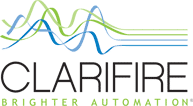Recently the Treasury Department and the Department of Housing and Urban Development (HUD) published their long-awaited plans for housing finance reform. While the plans are most recognized for their proposed changes to government-sponsored enterprises (GSEs), they also introduce suggestions for amending Federal Housing Administration (FHA) programs and guidelines, including specific guidance on default servicing.

HUD’s plan focuses on modernizing FHA, which includes the need to “significantly improve FHA’s outdated servicing policies, processes and technology,” the report explains. HUD expresses concern that rising FHA servicing costs have contributed to higher FHA borrowing costs overall.
The Urban Institute found that the cost of servicing non-performing loans (NPL) has increased from $482 in 2008 to $1,949 in 2014. Notably, NPL servicing costs went as high as $2,357 per loan in 2013. While rising NLP servicing costs have been experienced throughout the market, the Federal Reserve estimates that the cost of servicing NPL FHA loans is 50 times the cost of servicing performing loans – compared to the GSEs, where the servicing NPL is 17 times the cost of performing loans.
HUD’s Default Servicing Recommendations
To strengthen the default servicing process, HUD made eight recommendations for policy changes:
- Enhance FHA’s ability to manage defaults with more work out flexibility.
- Clarify rules around conveyance and be consistent on “conveyance condition,” while incentivizing timely payments.
- Use alternatives to conveyance with a “best execution model.”
- Create more flexible loss mitigation processes to streamline the paperwork, business practices, and borrower qualifications.
- Streamline the default milestone timeline to add greater servicer flexibility and incentivize more efficient resolutions.
- Reevaluate “penalties that do not match the severity of missed deadlines.”
- Establish a paperless data-driven claims process.
- Coordinate between the Consumer Financial Protection Bureau (CFPB), Federal Housing Finance Agency (FHFA), and FHA to study how to reduce default servicing costs.
What This Means for Servicers
These reforms could have a significant impact on streamlining the default servicing process for both servicers and borrowers, while reducing NPL costs, and ultimately protecting HUD’s Mutual Mortgage Insurance Fund (MMIF). When coupled with HUD’s overall mission to modernize the agency’s technology infrastructure, paperless, data-driven initiatives would serve to better align FHA’s capability with the industry’s, resulting in faster timelines and more certain outcomes.
As HUD embarks on the implementation of these administrative proposals, consulting with servicers and technology vendors ensures that the implementation of new changes is informed and inclusive of insights gained by the private sector in recent years. This is an important time in our industry, where numerous aspects of reform are experiencing reconsideration. We encourage our industry partners to share comments and insights through the channels available to us.
Stay Up to Date with CLARIFIRE
Clarifire works diligently to stay abreast of regulatory, investor, and government agency change within our industry, especially those addressing default servicing. This approach to our business helps ensure the CLARIFIRE® product is current in terms of process, but we also pride ourselves on being ahead of the curve in innovation. We believe it is a vital role to assist our servicing clients in evolving their business practices and ensuring their readiness for change. Servicing systems and processes need the flexibility and cohesiveness that is inherent in CLARIFIRE’s workflow process automation, preparing servicers for the next generation of regulatory transformation and reaping the benefits of reduced NPL costs at the same time.
The CLARIFIRE® application is easily deployed and highly configurable, helping your default servicing team stave off emerging risk and making certain you are in a position to respond to changes in policy as they occur. Prepare your servicing organization by partnering with CLARIFIRE® to implement an innovative industry workflow and workout application. Let Clarifire help your organization drive operational change today. Visit eClarifire.com or contact us directly at 866.222.3370.
If you liked this blog, read these next:
- License Required for Nonbank Servicers in New Jersey
- CFPB Supervisory Findings Show Avoidable Policy Violations
- Regulators Are Keeping a Close Eye On Loss Mitigation Practices, Are You?


